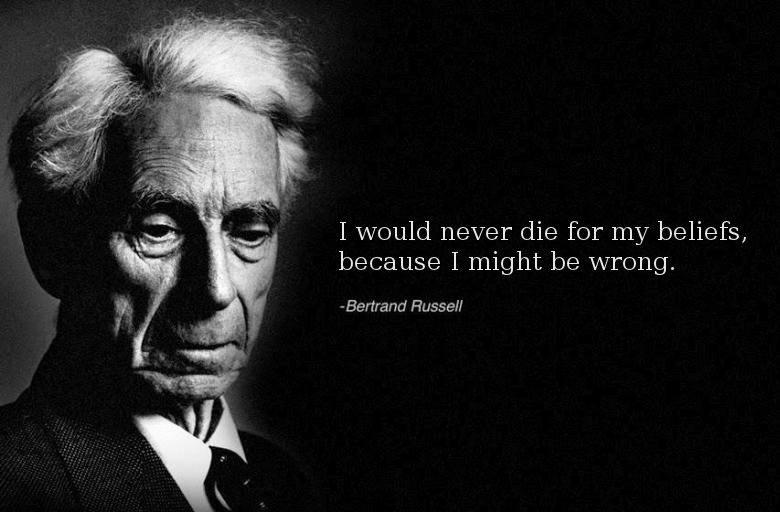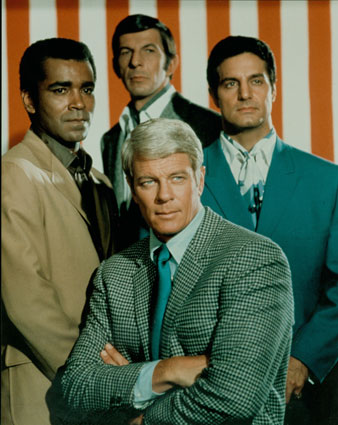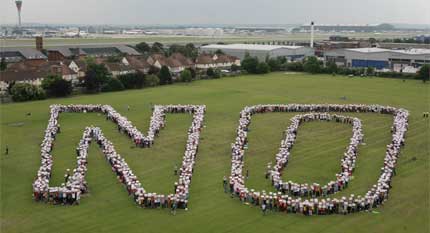Archive for the ‘Level 5 Courage’ Category
Untapped Power of Self
 As a subject matter expert (SME), you have more power than you think, and certainly more than you demonstrate.
As a subject matter expert (SME), you have more power than you think, and certainly more than you demonstrate.
As an SME, you have special knowledge. Looking back, you know what worked, what didn’t, and why; looking forward, you know what should work, what shouldn’t, and why. There’s power in your special knowledge, but you underestimate it and don’t use it to move the needle.
As an SME, without your special knowledge there are no new products, no new technologies, and no new markets. Without it, it’s same-old, same-old until the competition outguns you. It’s time you realize your importance and behave that way.
As an SME, when you and your SME friends gang together, your company must listen. Your gang knows it all. From the system-level stuff to the most detailed detail, you know it. Remember, you invented the technology that powers your products. It’s time you behave that way.
As an SME, with your power comes responsibility – you have an obligation to use your power for good. Figure out what the technology wants, and do that; do the sustainable thing; do the thing that creates jobs; do what’s good for the economy; sit yourself in the future, look back, and do what you think is right.
As an SME, I’m calling you out. I trust you, now it’s time to trust yourself. And it’s time for you to behave that way.
Beliefs Govern Ideas
 Some ideas are so powerful they change you. More precisely, some ideas are so powerful you change your beliefs to fit them.
Some ideas are so powerful they change you. More precisely, some ideas are so powerful you change your beliefs to fit them.
These powerful ideas come in two strains: those that already align with your beliefs and those that contradict.
The first strain works subtly. While you think on the idea, your beliefs test it for safety. (They work in the background without your knowledge.) And if the idea passes the sniff test, and your beliefs feel safe, they let the subconscious sniffing morph into conscious realization – the idea fits your beliefs. The result: You now better understand your beliefs and you blossom, grow, and amplify yourself.
The second strain is subtle as a train wreck – a full frontal assault on your beliefs. This strain contradicts our beliefs and creates an emotional response – fear, anger, stress. And because these ideas threaten our beliefs, our beliefs reject them for safety’s sake. It’s like an autoimmune system for ideas.
But this autoimmune system has a back door. While it rejects most of the idea, for unknown reasons it passes a wisp to our belief system for sniffing. Like a vaccine, it wants to strengthen our beliefs against the strain. And in most cases, it works. But in rare cases, through deep introspection, our beliefs self-mutate and align with the previously contradicting idea. The result: You change yourself fundamentally.
Truth is, ideas are not about ideas; ideas are about beliefs. Our beliefs give life to ideas, or kill them. But we give ideas too much responsibility, and take too little. Truth is, we can change what we think and feel about ideas.
More powerfully, we can change what we think and feel about our beliefs, but only if we believe we can.
Creativity’s Mission Impossible
 Whether it’s a top-down initiative or a bottom-up revolution, your choice will make or break it.
Whether it’s a top-down initiative or a bottom-up revolution, your choice will make or break it.
When you have the inspiration for a bottom-up revolution, you must be brave enough to engage your curiosity without self-dismissing. You’ll feel the automatic urge to self-reject – that will never work, too crazy, too silly, too loony – but you must resist. (Automatic self-rejection is the embodiment of your fear of failure.) At all costs you must preserve the possibility you’ll try the loony idea; you must preserve the opportunity to learn from failure; you must suspend judgment.
Now it’s time to tell someone your new thinking. Summon the next level of courage, and choose wisely. Choose someone knowledgeable and who will be comfortable when you slather them with the ambiguity. (No ambiguity, no new thinking.) But most importantly, choose someone who will suspend judgment.
You now have critical mass – you, your partner in crime, and your bias for action. Together you must prevent the new thinking from dying on the vine. Tell no one else, and try it. Try it at a small scale, try it in your garage. Fail-learn-fail until you have something with legs. Don’t ask. Suspend judgment, and do.
And what of top down initiatives? They start with bottom-up new thinking, so the message is the same: suspend judgment, engage your bias for action, and try it. This is the precursor to the thousand independent choices that self-coordinate into a top-down initiative.
New thinking is a choice, and turning it into action is another. But this is your mission, if you choose to accept it.
I will be holding a half-day Workshop on Systematic DFMA Deployment on June 13 in RI. (See bottom of linked page.) I look forward to meeting you in person.
Choose Your Path
 There are only three things you can do:
There are only three things you can do:
1. Do what you’re told. This is fine once in a while, but not fine if you’re also told how.
2. Do what you’re not told. This is the normal state of things – good leaders let good people choose.
3. Do what you’re told not to. This is rarified air, but don’t rule it out.
Of Sound Mind and Body
 As professionals we get paid to think. But unlike professional athletes, we’ve forgotten the importance of mind and body.
As professionals we get paid to think. But unlike professional athletes, we’ve forgotten the importance of mind and body.
Clearly, mind is connected to body. (I’m not talking about a metaphysical connection, I’m talking about a physical physical connection.) There are electromechanical connections (nerves) that pass information between the two and hydromechanical connections (blood vessels) that pass chemistry (oxygen and glucose, among others). The coupling is clear – what happens in one influences the other, then the other retorts. This back-and-forth ringing is complex and real. From the outside, our system architecture is highly coupled, yet from the inside we forget.
Professional athletes want high performance, and they get it through hard work, good food, regimented eating schedules, and rest. From the outside it seems they’re all about body, but on the inside they’re all whole system optimization – mind and body. (Yogi Berra – baseball is 90% mental and the other half physical.) They know food and rest influence the body, but they also know it influences the mind. They remember, we forget.
As a professional thinker, I urge you to do all you can to think well. Eat well, eat regularly, and get rest. The cost of a bad decision is high, and they’re more likely when blood sugar is low and you’re tired. If you don’t do it for your career, do it for your company – remember, they’re paying you to think.
(Image credit: iStockphoto)
Win Hearts and Minds
 As an engineering leader you have the biggest profit lever in the company. You lead the engineering teams, and the engineering teams design the products. You can shape their work, you can help them raise their game, and you can help them change their thinking. But if you don’t win their hearts and minds, you have nothing.
As an engineering leader you have the biggest profit lever in the company. You lead the engineering teams, and the engineering teams design the products. You can shape their work, you can help them raise their game, and you can help them change their thinking. But if you don’t win their hearts and minds, you have nothing.
Engineers must see your intentions are good, you must say what you do and do what you say, and you must be in it for the long haul. And over time, as they trust, the profit lever grows into effectiveness. But if you don’t earn their trust, you have nothing.
But even with trust, you must be light on the tiller. Engineers don’t like change (we’re risk reducing beings), but change is a must. But go too quickly, and you’ll go too slowly. You must balance praise of success with praise of new thinking and create a standing-on-the-shoulders-of-giants mindset. But this is a challenge because they are the giants – you’re asking them to stand on their own shoulders.
How do you know they’re ready for new thinking? They’re ready when they’re willing to obsolete their best work and to change their work to make it happen. Strangely, they don’t need to believe it’s possible – they only need to believe in you.
Now the tough part: There’s a lot of new thinking out there. Which to choose?
Whatever the new thinking, it must make sense at a visceral level, and it must be simple. (But not simplistic.) Don’t worry if you don’t yet have your new thinking; it will come. As a seed, here are my top three new thinkings:
Define the problem. This one cuts across everything we do, yet most underwhelm it. To get there, ask your engineers to define their problems on one page. (Not five, one.) Ask them to use sketches, cartoons, block diagram, arrows, and simple nouns and verbs. When they explain the problem on one page, they understand the problem. When they need two, they don’t.
Test to failure. This one’s subtle but powerful. Test to define product limits, and don’t stop until it breaks. No failure, no learning. To get there, resurrect the venerable test-break-fix cycle and do it until you run out of time (product launch.) Break the old product, test-break-fix the new product until it’s better.
Simplify the product. This is where the money is. Product complexity drives organizational complexity – simplify the product and simply everything. To get there, set a goal for 50% part count reduction, train on Design for Assembly (DFA), and ask engineering for part count data at every design review.
I challenge you to challenge yourself: I challenge you to define new thinking; I challenge you to help them with it; I challenge you to win their hearts and minds.
Stop Doing – it will double your productivity
 For the foreseeable future, there will be more work than time. Yet year-on-year we’re asked to get more done and year-on-year we pull it off. Most are already at our maximum hour threshold, so more hours is not the answer. The answer is productivity.
For the foreseeable future, there will be more work than time. Yet year-on-year we’re asked to get more done and year-on-year we pull it off. Most are already at our maximum hour threshold, so more hours is not the answer. The answer is productivity.
Like it or not, there are physical limits to the number of hours worked. At a reasonable upper our bodies need sleep and our families deserve our time. And at the upper upper end, a 25 hour day is not possible. Point is, at some point we draw a line in the sand and head home for the day. Point is, we have finite capacity.
As a thought experiment, pretend you’re at (or slightly beyond) your reasonable upper limit and not going to work more hours. If your work stays the same, your output will be constant and productivity will be zero. But since productivity will increase, your work must change. No magic here, but how to change your work?
Changing your work is about choice – the choice to change your work. You know your work best and you’re the best one to choose. And your choice comes down to what you’ll stop doing.
The easiest thing to stop doing is work you’ve just completed. It’s done, so stop. Finish one, start one is the simplest way to go through life, but it’s not realistic (and productivity does not increase.) Still, it makes for a good mantra: Stop starting and start finishing.
The next things to stop are activities that have no value. Stop surfing and stop playing Angry Birds. Enough said. (If you need professional help to curb your surfing habit, take a look at Leechblock. It helped me.)
The next things to stop are meetings. Here are some guidelines:
- If the meeting is not worth a meeting agenda, don’t go.
- If it’s a status meeting, don’t go – read the minutes.
- If you’re giving status at a status meeting, don’t go – write a short report.
- If there’s a decision to be made, and it affects you, go.
The next thing to stop is email. The best way I know to kick the habit is a self-mandated time limit. Here are some specific suggestions:
- Don’t automatically connect your email to the server – make yourself connect to it.
- Create an email filter for the top ten most important people (You know who they are.) to route them to your Main inbox. Everyone else is routed to a Read Later inbox.
- Check email for fifteen minutes in the morning and fifteen minutes in the afternoon. Start with the Main inbox (important people) and move to the Read Later inbox if you have time. If you don’t have time for the Read Laters, that’s okay – read them later.
- Create an email rule that automatically deletes unread emails in two days and read ones in one.
- Let bad things happen and adjust your email filters and rules accordingly.
Once you’ve chosen to stop the non-productive work, you’ll have more than doubled your productive hours which will double your productivity. That’s huge.
The tough choices come when you must choose between two (or more) sanctioned projects. There are also tricks for that, but that’s different post.
Run From Your Success
 Don’t worry about your biggest competitor – they’re not your biggest competitor. You’ve not met your biggest competitor. Your biggest competitor is either from another industry or it’s three guys and a dog toiling away in their basement.
Don’t worry about your biggest competitor – they’re not your biggest competitor. You’ve not met your biggest competitor. Your biggest competitor is either from another industry or it’s three guys and a dog toiling away in their basement.
Certainly it’s impossible to worry about a competitor we’ve not met, but that’s just what we’ve got to do. We’ve got to use thought-shifting mechanisms to help us see ourselves from the framework of our unknown competitor.
Our unknown competitor doesn’t have much – no fully functional products, no fully built-out product lines, and no market share. And that’s where we must shift our thinking – to a place of scarcity – so we can see ourselves from their framework. We’ve got to look down (in the S-curve sense), sit ourselves at the bottom, and look up at our successful selves. It’s the best way to move from self-cherishing to self-dismantling.
To start, we must create our logical trajectory. First, define where we are and where we came from. Then, with a ruler aligned to the points, extend a line into the future. That’s our logical trajectory – an extrapolation in the direction of our success. Along this line we will do more of what got us here, more of what we’ve done. Without giving ground on any front, we will protect market share and build more. We’ve now defined how we see ourselves. We’ve now defined the thinking that could be our undoing.
Now we must force enlightenment on ourselves. We create an illogical trajectory where we see ourselves from a success-less framework. In this framework less is more; more-of-the-same is displaced with more-of-something-else; and success is a weakness. We know we’re sitting in the rights space when the smallest slice of incremental market share looks like a big, juicy bite – like it looks to our unknown competitor.
The disruptive technology created by our unknown competitor will start innocently. Immature at first, the disruptive technology will do most things poorly but do one thing better. Viewed from our success framework we will see only limitations and dismiss it, while our unknown competitors will see opportunity. We will see the does-most-things-poorly part and they’ll see the one-thing-better part. They will sell to a small segment that values the one-thing-better part.
In another variant, an immature disruptive technology will do less with far less. From our success framework we will see “less” while from their scarcity framework they will see “more”. They will sell a simpler product that does less for a price that’s far less. (And make money.)
Here’s the one that’s most frightening: an immature technology that does all things poorly but does them without a fundamental limitation of our technology. From our framework the limitation is so fundamental we won’t let ourselves see it. This limitation is un-seeable because we’ve built our business around it. (Think Kodak film.) This flavor of disruptive technology can put our business model out of business, yet we’ll dismiss it.
We’ll know we’ve shifted our thinking to the right place when we see our unknown competitors not as bottom-feeders but as hungry competitors who see our scraps as a smorgasbord.
We’ll know our thinking’s right when see not self-destruction, but self-disruption.
We’ll know all is right with the world we’re working on disruptive technologies to disrupt ourselves, disruptive technologies with the potential to create business models so compelling that we’ll gladly run from our success.
Can’t Say NO
- Yes is easy, no is hard.
- Sometimes slower is faster.
- Yes, and here’s what it will take:
- The best choose what they’ll not do.
- Judge people on what they say no to.
- Work and resources are a matched pair.
- Define the work you’ll do and do just that.
- Adding scope is easy, but taking it out is hard.
- Map yes to a project plan based on work content.
- Challenge yourself to challenge your thinking on no.
- Saying yes to something means saying no to something else.
- The best have chosen wrong before, that’s why they’re the best.
- It’s better to take one bite and swallow than take three and choke.
Be Your Stiffest Competitor
 Your business is going away. Not if, when. Someone’s going to make it go away and it might as well be you. Why not take control and make it go away on your own terms? Why not make it go away and replace it with something bigger and better?
Your business is going away. Not if, when. Someone’s going to make it go away and it might as well be you. Why not take control and make it go away on your own terms? Why not make it go away and replace it with something bigger and better?
Success is good, but fleeting. Like a roller coaster with up-and-up clicking and clacking, there’s a drop coming. But with a roller coaster we expect it – there’s always a drop. (That’s what makes it a roller coaster.) We get ready for it, we brace ourselves. Half-scared and half-excited, electricity fills us, self-made fight-or-flight energy that keeps us safe. I think success should be the same – we should expect the drop.
More strongly we should manage the drop, make it happen on our terms. But that’s going to be difficult. Success makes it easy to unknowingly slip into protecting-what-we-have mode. If we’re to manage the drop, we must learn to relish it like the roller coaster. As we’re ascending – on the way up – we must learn to create a healthy discomfort around success, like the sweaty-palm feeling of the roller coaster’s impending wild ride.
A sky-is-falling approach won’t help us embrace the drop. With success all around, even the best roller coaster argument will be overpowered. The argument must be based on positivity. Acknowledge success, celebrate it, and then challenge your organization to improve on it. Help your organization see today’s success as the foundation for the future’s success – like standing on the shoulders of giants. But in this case, the next level of success will be achieved by dismantling what you’ve built.
No one knows what the future will be, other than there will be increased competition. Hopefully, in the future, your stiffest competitor will be you.
Manage For The Middle
 Year-end numbers, quarter-to-quarter earnings, monthly production, week-to-week payroll. With today’s hyper-competition, today’s focus is today. Close-in focus is needed, it drives good stuff – vital few, productivity, quality, speed, and stock price. Without question, the close-in lens has value.
Year-end numbers, quarter-to-quarter earnings, monthly production, week-to-week payroll. With today’s hyper-competition, today’s focus is today. Close-in focus is needed, it drives good stuff – vital few, productivity, quality, speed, and stock price. Without question, the close-in lens has value.
But there’s a downside to this lens. Like a microscope, with one eye closed and the other looking through the optics, the fine detail is clear, but the field of view is small. Sure the object can be seen, but that’s all that can be seen – a small circle of light with darkness all around. It’s great if you want to see the wings of a fly, but not so good if you want to see how the fly got there.
Millennia, centuries, grand children, children. With today’s hyper-competition, today’s focus is today. Long-range focus is needed, it drives good stuff – infrastructure, building blocks, strategic advantage. Though it’s an underused lens, without question, the far-out lens has value.
But there’s a downside to this lens. Like a telescope, with one eye closed and the other looking through the optics, the field of view is enormous, but the detail is not there. Sure the far off target can be seen, but no details – a small circle of light without resolution. It’s great if you want to see a distant landscape, but not so good if you want to know what the trees look like.
What we need is a special set of binoculars. In the left is a microscope to see close-in – the details – and zoom out for a wider view – the landscape. In the right is a telescope to see far-out – the landscape – and zoom in for a tighter view – the details.
Unfortunately the physics of business don’t allow overlap between the lenses. The microscope cannot zoom out enough and the telescope cannot zoom in enough. There’s always a gap, the middle is always out of focus, unclear. Sure, we estimate, triangulate, and speculate (some even fabricate), but the middle is fuzzy at best.
It’s easy to manage for the short-term or long-term. But the real challenge is to manage for the middle. Fuzzy, uncertain, scary – it takes judgment and guts to manage for the middle. And that’s just where the best like to earn their keep.

 Mike Shipulski
Mike Shipulski